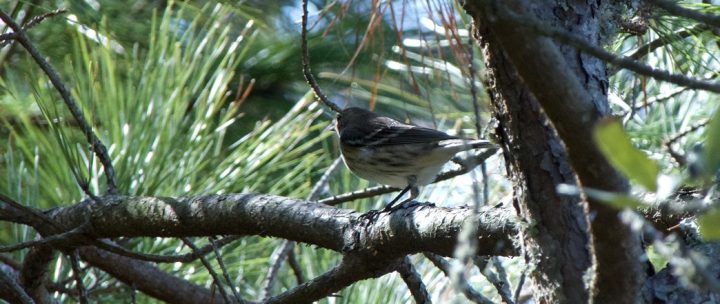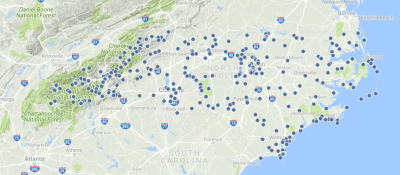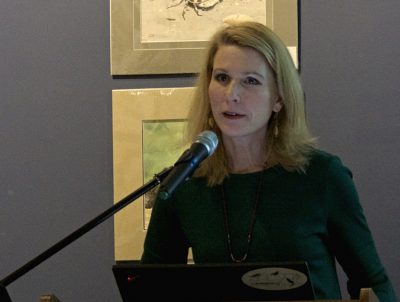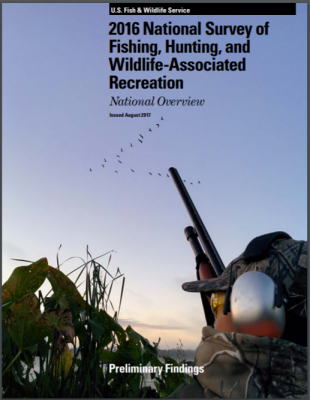
COROLLA – More of a stroll through a forest than a rigorous hike, the Currituck Banks Maritime Hiking Trail here, part of a 10-year-old network of birding trails on the North Carolina coast, meanders for three-quarters of a mile from a boardwalk to the Currituck Sound, leading visitors through some of the most spectacular groves of live oak on the Outer Banks.
It is mostly quiet, except for the birds. In the canopy, crows are having a furious argument – or maybe it’s just a discussion – the cawing reverberating throughout the forest. To the north of the trail a woodpecker is drilling into a tree. There are three or four woodpeckers that are a part of this habitat, but can’t be seen from the trail.
Supporter Spotlight
The path terminus at the sound is a muddy expanse of cattails and rushes. Pine trees line the bank, their branches an ideal habitat for smaller birds, and there is a constant chirrup and rustle of wings as they navigate the branches.

The trail is one of the Coastal Plain North Carolina Birding Trails. It’s part of the broader North Carolina Birding Trail, a cooperative project by the North Carolina Wildlife Resources Commission, Audubon North Carolina, North Carolina Sea Grant, the U.S. Fish and Wildlife Service, the North Carolina State University Cooperative Extension and North Carolina Parks and Recreation that totals 310 sites across the state. The coastal plain portion of the trail, which includes the Currituck Banks trail and 101 other sites, was completed in 2007.
The trail’s anniversary was observed Oct. 20 at a Wings Over Water Wildlife Festival gathering at the Alligator River National Wildlife Refuges Visitor Center on Roanoke Island. Organizers estimated about 100 attended, including Kristin Cooper, North Carolina’s first lady, who also spoke at the event, which was a celebration of success and a reflection on what the North Carolina Birding Trail represents.
“It’s very exciting,” said Heather Hahn, executor director of Audubon North Carolina. “Audubon feels very privileged to have been a founding partner of the North Carolina Birding Trails. They offer … families a place to connect in nature. It rejuvenates us all.”

Nearly every state park, national park, state game land, U.S. Fish and Wildlife land and state recreational facility is part of the system.
Supporter Spotlight
Hahn’s observations about the importance of the trails were echoed by Scott Anderson, bird conservation biologist with the North Carolina Wildlife Resource Commission.
“The uniqueness of the birding trails lies in the captivating strength of our natural world, it’s endless capacity to evoke wonder,” he said.
Cooper, a self-proclaimed amateur birder, described at the event how bird-watching is a universal introduction to wildlife and explained how she became involved in birding.

“I found myself snowed in during the blizzard of 1996 … with three young children,” Cooper said. “Fortunately, for Christmas I had gotten a couple of birdfeeders and a field guide to the birds of the eastern U.S. I started a bird journal. By the time summer had ended I had identified 54 birds in my backyard, and I had a new hobby.”
Earlier this year, Cooper worked with Audubon North Carolina to help establish a bird and pollinator-friendly garden at the Executive Mansion, the official residence of the governor and first family. The original Victorian garden planted by former first lady Dottie Martin was overgrown. Audubon played a lead role in designing and fundraising for the refreshed garden, which will now benefit pollinators, birds and other wildlife. In coordination with the dedication of the Executive Mansion native plant garden, Gov. Roy Cooper declared this week Native Plants Week to encourage North Carolinians to plant native plants at their homes, yards and businesses.
Growing Interest, Economic Boost
There has been for some time a growing interest in wildlife observation, and bird watching is a huge part of that. Every five years, U.S. Fish and Wildlife compiles an analysis of outdoor activities, and the latest preliminary report shows that trend continuing. Although state figures are not included in the report, nationally there has been a 21 percent increase in wildlife observing.
Some observations are made from the home, but large numbers of people travel, and the benefits to communities can be significant.

“They stimulate the local economy,” Hahn noted during the event.
Anderson also explained the specific economic benefits the birding community brings.
“We experimented with a birder-friendly business program, which we’re redeveloping now,” he said. The program was designed to provide tools and information to market business and community interests to birders as they travel the Birding Trail. The original program focused on hotels and lodging businesses.
In an interview after the event, Anderson explained how the North Carolina Birding Trails program is hoping to strengthen the revamped business program.

“There are a ton of businesses already set up as a bird-friendly business. They need to know what birding sites are near them. Also, (business owners need to know) when birders are around and how they can take advantage of those opportunities,” he said.
Birding and wildlife observation bring in more than $1.2 billion annually, Anderson noted, adding that the economic boost is an important part of a strategy that also aims to preserve habitat.
“The patterns of the past are predicted to continue,” he said. “We will have a more urbanized North Carolina in 2030. To ensure that birds and other wildlife have a place in the future landscape, we need to support not only the people but the local economies, the economies that provide for people.”
Anderson cautioned, though, against becoming too dependent on numbers when talking about the beauty of the North Carolina birding trails.
“An actuarial spreadsheet is not what measures the past 10 years of success, but (instead it’s) the communities we’ve built around it,” he said.
That growing community of enthusiasts is looking to experience wildlife through a camera or binoculars or in their backyard. The trend provides a foundation for efforts to conserve wildlife habitat. And, because birds are so much a part of everyday life, they take on an important introductory role to the natural world.
“Birds are the gateway access to nature,” Anderson said.
It is that gateway that helps people to understand the beauty of nature, and how important it is that it is protected.
“We want to work to assure that these areas are around for future generations,” Hahn said.
There are, Anderson noted, some 1.1 million acres of protected land surrounding the state’s birding trails, land that can offer both the casual hiker and avid birder that chance to experience something remarkable.
“The uniqueness of the birding trails lies in captivating the strength of our natural world in its endless capacity to evoke wonder,” Anderson said. “That is the basis of the birding trail—finding that wonder in the natural world.”







